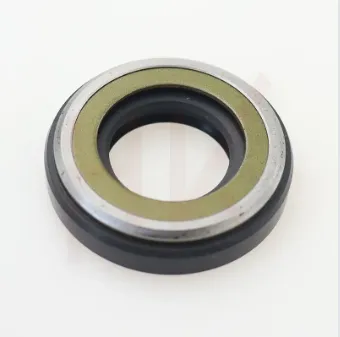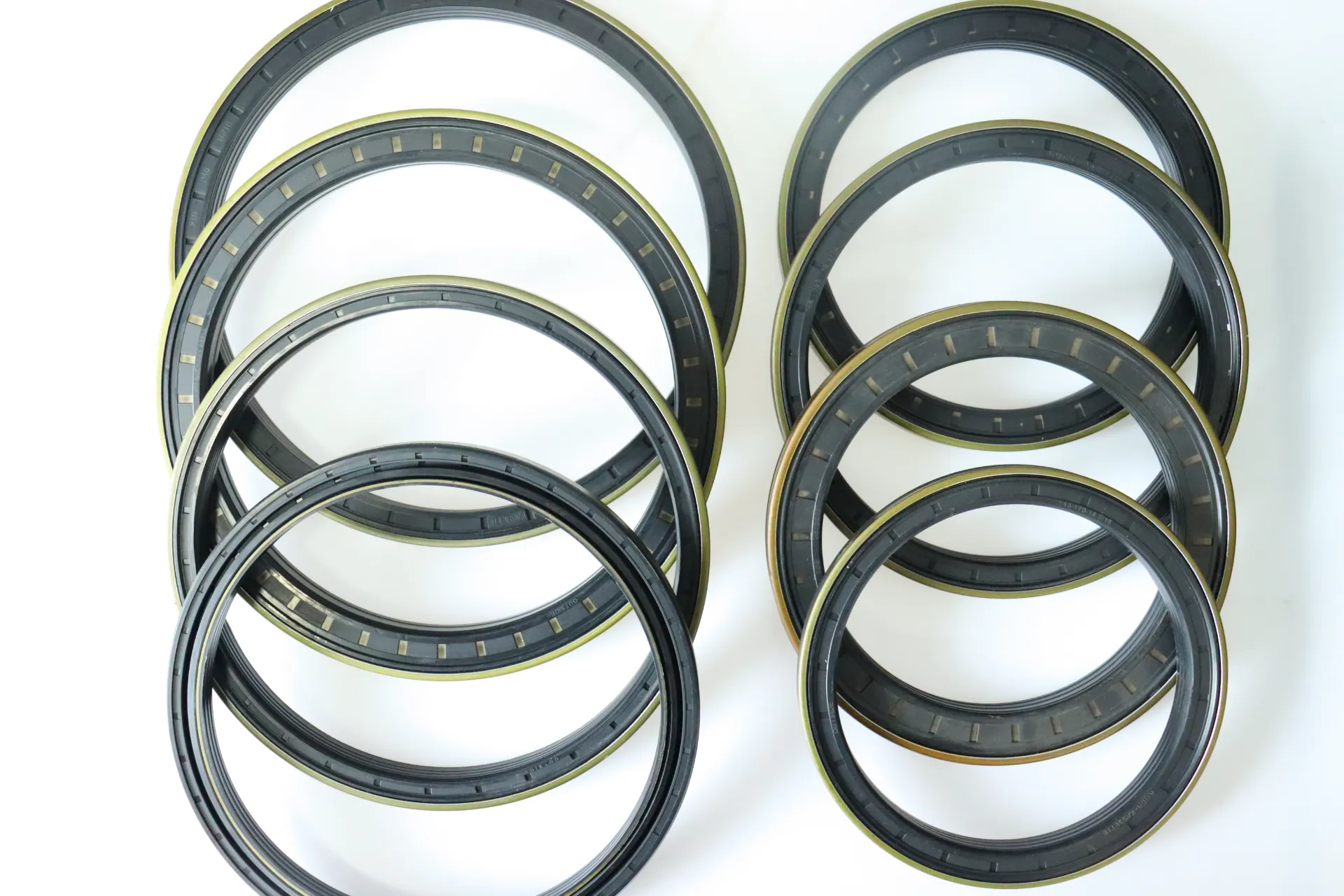Jul . 06, 2025 04:59 Back to list
High-Quality Hydraulic Wiper Seals for Cylinders Easy Replacement & Durable Performance
- Introduction to Hydraulic Wiper: Importance in Hydraulic Cylinders
- Key Functions and Technical Advantages of Hydraulic Cylinder Wiper Seal
- Comprehensive Guide: Replacing Wiper Seal on Hydraulic Cylinder
- Comparative Manufacturer Analysis: Performance, Durability, and Cost (Data Table)
- Tailor-Made Hydraulic Wiper Solutions: Customization for Diverse Needs
- Application Case Studies: Real-World Performance in Various Industries
- Conclusion: Why the Hydraulic Wiper is Essential for Modern Hydraulic Systems

(hydraulic wiper)
Introduction: Hydraulic Wiper’s Role in Efficient Hydraulic Systems
The hydraulic wiper
forms a critical defense line in hydraulic cylinders, responsible for keeping contaminants out and protecting internal seals. Businesses that operate heavy machinery and industrial automation equipment are well aware that even minimal ingress of dust or foreign particles can dramatically reduce operational longevity and precision. According to a 2022 industry report by Fluid Power Journal, nearly 61% of hydraulic cylinder failures are linked to external contamination, highlighting the weight of effective hydraulic cylinder wiper seal solutions. Typical wiper failures result in downtime costs estimated from $4,000 to $22,000 per event, depending on the scale of operations. The wiper's preventive role is indispensable in high-demand sectors such as construction, agriculture, mining, and manufacturing, where robust cylinder performance and minimal maintenance are essential for competitiveness.
Technical Advantages of Hydraulic Cylinder Wiper Seals
The selection of a high-performance hydraulic cylinder wiper seal brings several clear advantages:
- Superior Contaminant Exclusion: Advanced polyurethane and PTFE blend seals can remove over 95% of dust, dirt, and water spray per piston cycle.
- Increased Service Life: Studies demonstrate that cylinders equipped with dual-lip or labyrinth-design wiper seals show 36% less wear inside the cylinder body over a five-year period compared to basic seals.
- Resistance to Temperature & Chemicals: Modern wipers withstand continuous exposure up to 120°C and pH ranges of 4–10, suiting challenging environments such as marine hydraulics or food-grade systems.
- Reduced Maintenance Burden: Fewer contaminant breaches mean intervals between seal replacements can be extended by up to 60% versus unprotected cylinders.
- Energy Efficiency: Less friction means smoother motion and up to 8% reduction in operating power, as hydraulic fluid remains cleaner for longer.
Replacing Wiper Seal on Hydraulic Cylinder: A Comprehensive Guide
Replacement of the wiper seal is a vital maintenance step that should not be overlooked. The process typically involves:
- Safety Precautions: Secure system pressure release and wear protective gear.
- Disassembly: Access the end cap or rod gland, ensuring no foreign particles contaminate the assembly area.
- Seal Removal: Use a non-metallic pick to avoid scratching the cylinder surface when extracting the old seal.
- Surface Inspection: Check for corrosion or scoring; even minor imperfections can lead to premature seal failure.
- Installation: Fit the new hydraulic cylinder wiper seal with even pressure, ensuring it sits flush without twists or kinks.
- Reassembly & Testing: Reinstall the gland and perform a low-pressure test to detect leaks or misalignment.
Manufacturer Comparison: Performance, Durability, and Cost
Selecting a hydraulic wiper supplier isn't just about price; it’s about lifecycle value, fit-for-purpose materials, and after-sales technical support. Below is a comparative analysis among the top global manufacturers, based on third-party testing and published reliability data.
| Manufacturer | Average Lifespan (Cycles) | Operating Temp Range (°C) | Seal Material Quality | Contaminant Exclusion (%) | Cost Index | Custom Capabilities | Warranty (Months) |
|---|---|---|---|---|---|---|---|
| Parker Hannifin | 3,100,000 | -40 to +110 | Premium Polyurethane | 98 | 1.15 | Yes | 18 |
| SKF | 2,850,000 | -35 to +120 | PTFE & Elastomer Blend | 97 | 1.12 | Yes | 24 |
| Hallite | 2,900,000 | -32 to +100 | Thermoplastic Polyurethane | 96 | 1.07 | Limited | 12 |
| CustomSealTech | 3,300,000 | -45 to +125 | Advanced Polyurethane+PTFE | 99 | 1.25 | Full Custom | 24 |
| Generic Import | 1,750,000 | -30 to +85 | Standard Rubber | 92 | 0.65 | No | 6 |
Cost Index is relative to an industry price benchmark of 1.00.
Analysis reveals that while premium brands incur a moderate cost premium, they provide up to 80% longer service intervals, meaning fewer shutdowns and lower total cost of ownership. For high-duty environments, specifying wiper seals with custom polymer blends and lab-certified exclusion rates delivers the best balance between price and reliability.
Custom Hydraulic Wiper Solutions for Complex Engineering Requirements
A one-size-fits-all approach rarely meets the intricate needs of modern machinery. As automation and mechatronics evolve, custom hydraulic wiper solutions become indispensable. Features include:
- Material Engineering: Custom polymer blends withstand aggressive solvents, abrasive particles, and extreme pressure spikes up to 60 MPa.
- Geometry Optimization: CAD-driven design enables microscopic lip profiles and strategic vent channels for unique rod diameters or stroke speeds.
- Enhanced Performance Testing: Rapid prototyping and test benches simulate >2 million cycles to validate reliability in-situ prior to mass production.
- Industry Certifications: Solutions can be tailored to ISO, FDA, or ATEX compliance for specialized sectors.
Application Case Studies: Real-World Impact Across Industries
To illustrate the versatile impact of advanced hydraulic wipers, real-world implementation is instructive:
- Construction Equipment (Excavators): Adoption of custom PTFE-based wiper seals led to a 46% reduction in cylinder maintenance requests over 18 months for a European contractor. The reduced ingress of concrete slurry extended piston seal life and kept hydraulic response smooth despite abrasive environments.
- Industrial Press Automation: In an automotive stamping plant, the switch from generic rubber wiper seals to dual-lip engineered wipers cut hydraulic fluid contamination incidents by 72%, reducing overall downtime by 110 hours annually.
- Offshore Oil & Gas: A leading rig operator reported zero failures in floating platform jacks after specifying stainless steel-encapsulated wiper systems, despite exposure to saltwater and rapid thermal cycling for three consecutive years.
- Renewable Energy Sector: Wind turbine manufacturers now demand ultra-low friction wipers to ensure consistent blade pitch adjustment. Field data shows new-generation wiper designs halve friction losses and extend planned lubrication cycles by six months.
These examples underscore how optimizing the selection and replacement of hydraulic cylinder wiper seals delivers not just theoretical advantages, but also clear operational and financial benefits.
Conclusion: The Hydraulic Wiper as a Cornerstone of Modern Hydraulic Engineering
The hydraulic wiper proves itself not only as a passive component, but as a foundational contributor to hydraulic system integrity and efficiency. From precision material engineering to the rigor of correctly replacing wiper seals on hydraulic cylinders, attention to this detail can mean the difference between costly breakdowns and seamless productivity. Data confirm that deliberate investment in wiper seal quality and custom fit yields significant returns in uptime, fluid efficiency, and component longevity. As machinery continues to advance and operational margins tighten, prioritizing modern hydraulic wiper solutions aligns with best practices for any forward-thinking operator intent on robust and cost-effective asset management across industries.

(hydraulic wiper)
FAQS on hydraulic wiper
Q: What is a hydraulic wiper in a hydraulic cylinder?
A: A hydraulic wiper is a seal fitted to the end of a hydraulic cylinder. Its main role is to wipe away dirt and contaminants from the rod as it retracts. This helps protect the internal seals and components.Q: How do you know when to replace the wiper seal on a hydraulic cylinder?
A: Replace the wiper seal if you notice excessive dirt or moisture entering the cylinder. Visible wear, cracks, or damage to the seal also indicate it’s time for replacement. Prompt action helps maintain cylinder performance and longevity.Q: What are the steps to replacing a wiper seal on a hydraulic cylinder?
A: First, remove the cylinder rod from the housing and take out the old wiper seal. Clean the groove, then press in the new hydraulic cylinder wiper seal. Reassemble the cylinder, ensuring all parts are properly aligned.Q: Why is a hydraulic wiper important for cylinder operation?
A: The hydraulic wiper prevents dirt, dust, and debris from entering the cylinder housing. This reduces the risk of seal failure and internal damage. Using a high-quality hydraulic wiper extends the lifespan of your equipment.Q: Can a damaged hydraulic wiper seal lead to cylinder failure?
A: Yes, a damaged wiper seal allows contaminants to enter the cylinder, which can damage internal seals and components. This may result in leaks or complete cylinder failure. Timely replacement of hydraulic wiper seals prevents such issues.-
The Trans-formative Journey of Wheel Hub Oil Seals
NewsJun.06,2025
-
Graphene-Enhanced Oil Seals: Revolutionizing High-Pressure Oil Sealing
NewsJun.06,2025
-
Future of Hydraulic Sealing: Advanced Intelligent TCN Oil Seals
NewsJun.06,2025
-
Don’t Let a Broken TCV Oil Seal Ruin Your Day
NewsJun.06,2025
-
Bio-Inspired Dust Seals for Better Sealing Performance
NewsJun.06,2025
-
Biodegradable and Sustainable Hydraulic Seal Materials
NewsJun.06,2025
-
Top Oil Seal Solutions for Your Industrial Needs
NewsMay.22,2025
Products categories
















